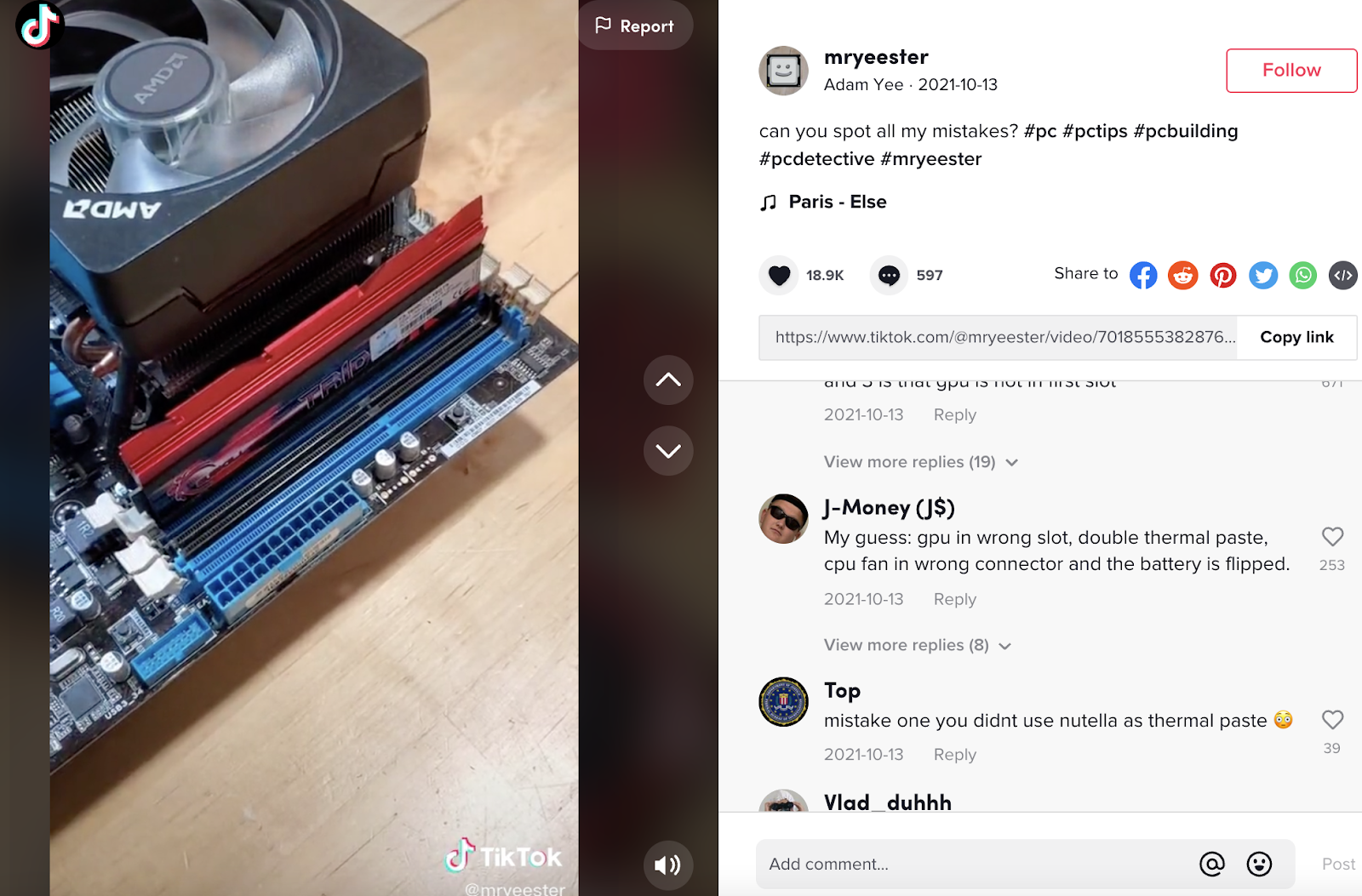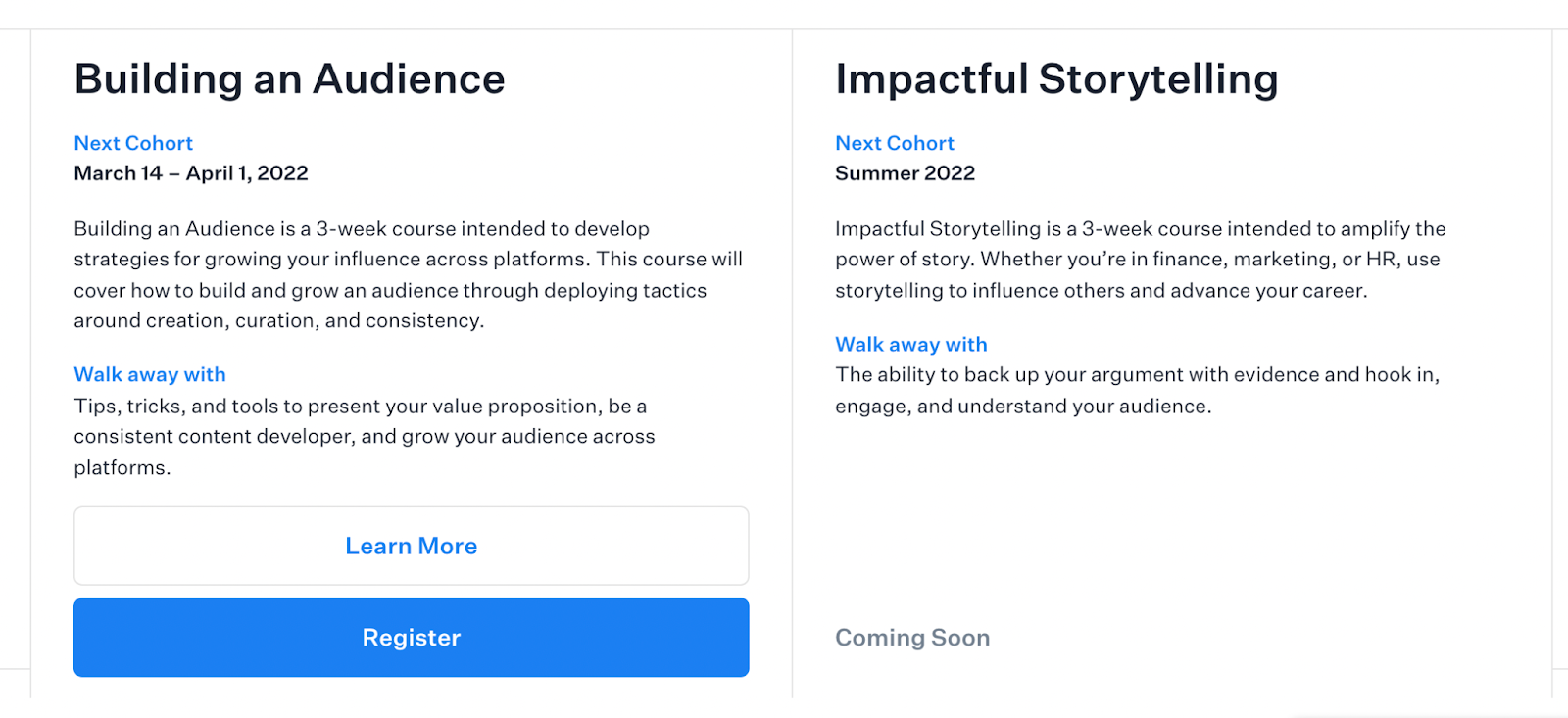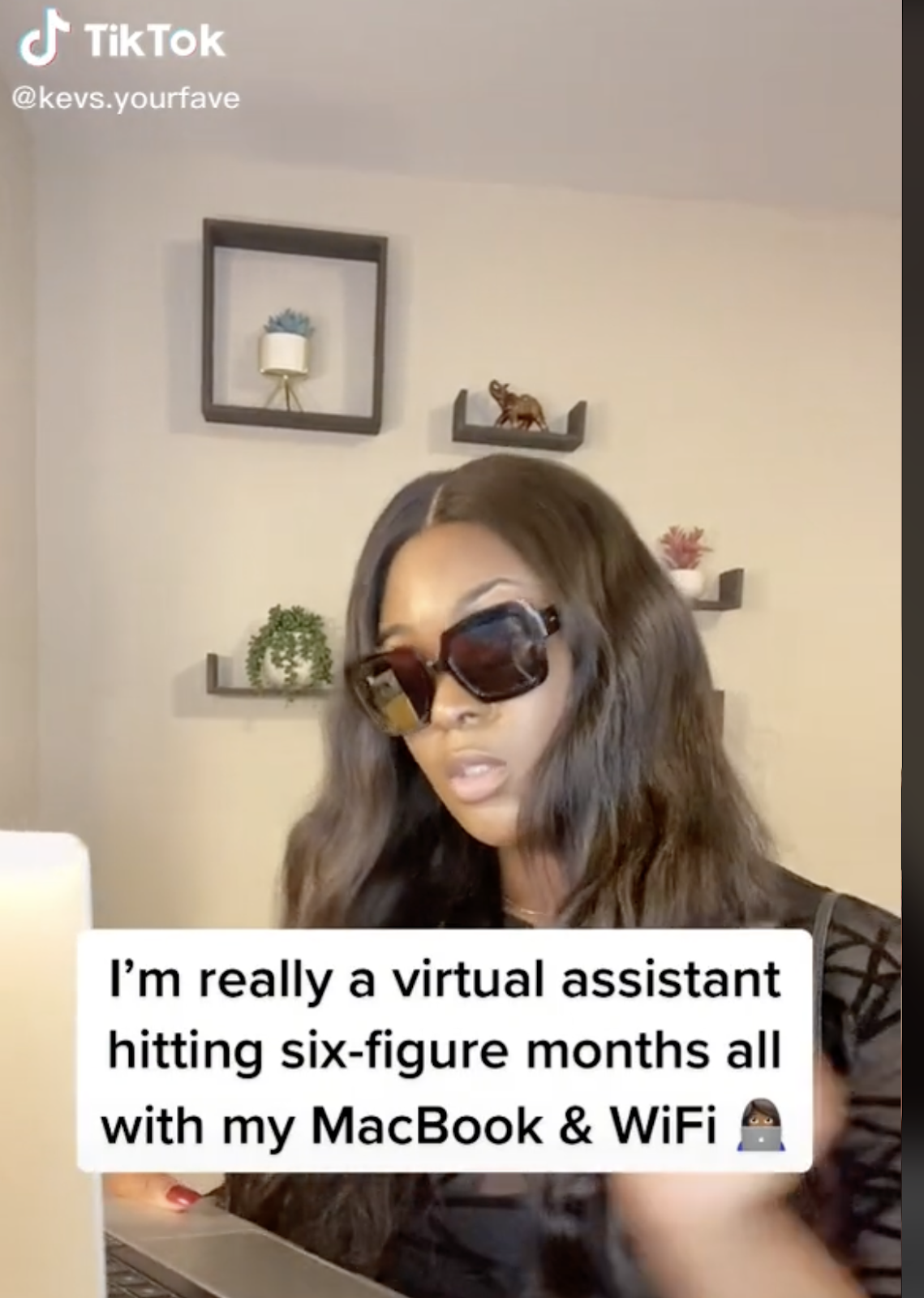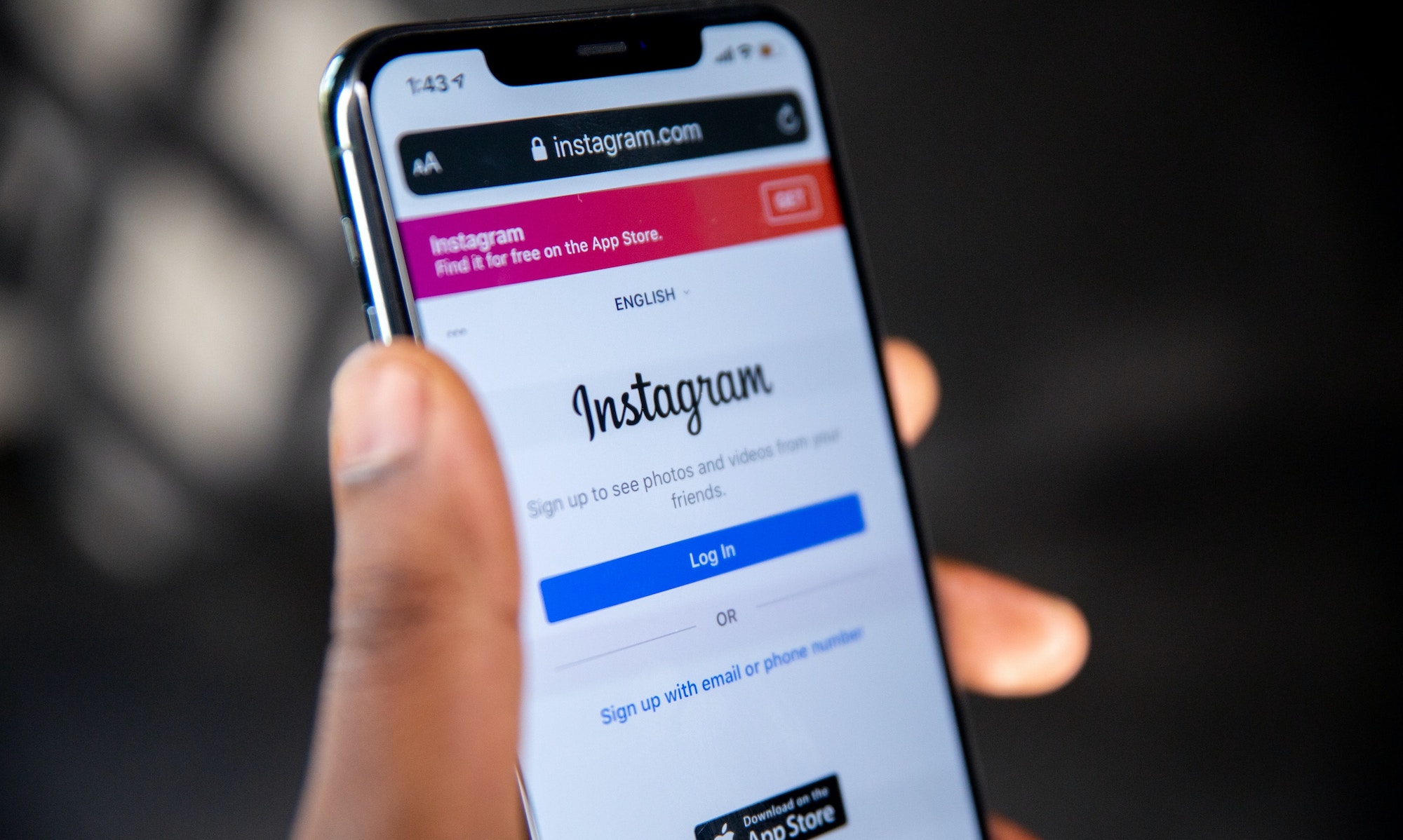Are creators the next breed of educators?

Listen to this article:
March 2020 was eye-opening in more ways than one.
For me, I learned how much I appreciate in-person school and how absurd the idea of online public school is for my children.
The evidence?
The Atlantic ran a story about how remote learning was a bust for many children, but here’s a peek into my personal experience with at-home school.
It didn’t take long for my daughter to dream up this scheme:

Yes, that’s my kid’s teddy bear acting as a proxy for her online Portuguese immersion classes. Where did I find the human child who was supposed to be in class? Playing games in the other room.
As I said, online public school was a bust for my family.
While many children suffered academically from schools closing, parents of young kids weren’t the only ones to question the value of the “new normal.”
Remember how universities went online too, and, undergraduates were required to pay full tuition for garbled Zoom calls and links to YouTube videos? Even Harvard undergrads had to pay the full $50K tuition for online classes. Gasp!
This is especially strange considering Harvard published its own study on how students in “active learning” (i.e., collaborative) classrooms learn more. 🧐
I bring up 2020’s disrupts in traditional education and how we (understandably) fell short for one reason:
Even though closing schools was a bummer, it opened the door for people to think way outside the traditional educational box.
And think, they did.
People questioned things like:
Is an online Harvard education worth $50K per year?

Is a college degree even necessary to get a job?

Are there other ways to learn that provide as much (or more) value than investing in a traditional education?

While I’m a fan of academia, I’m also a proponent of innovation in teaching and learning, which is exactly what we started to see more of in 2020.
As schools closed in 2020 and as the Creator Economy grew, there was an uptick in:
- Platforms used for teaching and learning purposes
- New creators teaching skills on social media that are traditionally reserved for the classroom
- Independent programs and creator courses to bolster real-world skills
- Brands hiring creators to educate audiences
Let’s take a closer look at why the rise of the Creator Economy is changing the future of education and how creators are a new breed of educators.
1. TikTok is a flourishing learning platform
TikTok grew over 180% among users aged 15-25 in 2020, according to Statista. The platform is available across 150 markets, 40 countries, and 75 languages.
TikTok’s growth opened the door for new trends across all verticals—including education. As of now, TikTok is considered one of the largest learning platforms in the world.
As it stands now, the hashtag #LearnOnTikTok has over 241 billion views and prompts viewers to dive in and “discover something new.”

So, why is TikTok so popular for learning? Fast Company reports TikTok is changing the future of education. Some reasons include:
- TikTok empowers creators. TikTok doesn’t share the same bureaucratic constraints as educational institutions. Instead, it makes it easy for anyone with a valuable skill to create video content and share their talents with niche and engaged audiences.
- Audiences care about influence over accreditation. Today’s audiences don’t care as much about formal credentials (we’ll talk about this more in a minute). They do care about how the knowledge creators share will impact their individual lives. It’s not about accreditation; it’s about achieving a tangible result from something they learned from a TikTok creator.
- Creators are passionate teachers and learners like that. I wrote my graduate thesis on motivational strategies in the classroom. In summary, I found that the excitement teachers brought to the lessons was the number one strategy that motivated students. TikTok is modern-day evidence of this exact idea. TikTok rewards creators with the most tangible of metrics—engaged followers. In other words, millions of students are showing up to watch their favorite teachers talk about grammar, math, computers, or chemistry, for example.
- TikTok is fun and collaborative by nature. TikTok doesn’t have classroom rules, and that makes it fun. It’s entertaining, it’s social, and it’s engaging. The social nature of TikTok creates the collaborative environment (even if it's online) that the Harvard study referenced above endorses. There’s a huge difference between watching a teacher drone on via a last-minute Zoom call and engaging with a fun video and its related comments.
TikTok is working as more than a platform to watch dance videos. It’s also a platform for learning that’s influencing the future of education.
Let’s take a look at some examples of creators on TikTok that are not only shaking up ideas of what it means to educate but also making a living on TikTok.
1/ Cool Chemistry Guy (@CoolChemistryGuy)
I’m not sure how high school Chemistry class was for you, but my teacher was so dull, rarely answered my questions, and we only used our Bunsen Burners (fire) a handful of times.
I got an A in Chemistry, but I cannot tell you one. single. thing. about. Chemistry.
Guy, aka @CoolChemistryGuy on TikTok, is the opposite of boring and a total dream follow for anyone who wants to learn more about Chemistry.
He makes the subject accessible by conducting fun experiments and explaining the reasons for the chemical reactions in his videos. He also links to further resources so people can continue learning.
Here’s an example of one of his videos.
What’s particularly interesting is Guy currently has 3.1M followers, 51.5M likes, and the comments are flooded with people interacting, talking about chemical reactions, and asking for more.

I can’t wrap my mind around a Chemistry teacher with 3.1M students, but this metric goes to show you—TikTok users aren’t only on the platform to watch trending dances. They’re also there to learn—maybe even get help with homework.
2/ Queenie Tan (@InvestWithQueenie)
Money management and investing education are also wildly popular on TikTok. There are several “finfluencers” on TikTok who offer tips and tricks on saving, making, and investing money.
People eat TikTok financial advice for breakfast. (Whether or not that’s a good thing is a debate for another day.)
As of now:
- #PersonalFinance has 5.4 billion views
- #StockTok has 2.1 billion views
- #FinTok has over 871 million views
Queenie Tan is one finfluencer with over 150K followers. She’s only 25 years old and doesn’t hold any formal qualifications. However, Economic Times reports she has over $400K in assets and has learned to budget well, invest smartly, and value money.

Tan’s videos offer quick insights into various financial concepts the lay investor may find helpful. Her TikTok educational content includes things like:
- How compound interest works
- What inflation means
- How she invests her money
- Breakdowns of S&P 500 returns
- Different types of financial independence
- And more
While Queenie’s not a certified financial planner, she makes a good point about investing education on TikTok in the Economic Times. She says that before TikTok, it was challenging to find investing information, and she used books to learn about investing. However, she ascertains that TikTok makes investing today more accessible to everyone.
It’s true. And, the rise of financial educators on TikTok like Tan proves it.
3/ Adam Yee (@MrYeeSter)
Adam Yee is yet another TikTok educator worth mentioning.
Yee teaches audiences a beneficial skill in today’s world—how to build computers.

While most of what Yee posts live on his TikTok page, his influence brings out another notable trend across the platform: TikTok is leveraging #LearnOnTikTok to capture more live viewers.
TikTok’s Discovery page recently advertised a live session inviting viewers to join Adam Yee and Alex Falcone to discuss cybersecurity.

It’s not too far out to say the future holds more creator-led, skill-building tutorials on social platforms.
This is especially true considering TikTok recently announced its $15 million initiative to partner with institutions and educational experts to produce more educational content.
2. Popular publications and individual creators are creating new educational opportunities
Let’s return to Srashti Kasera’s Twitter question, “Do you really need a degree to step into marketing?” (Marketing can be substituted for any industry, but we’ll stick with marketing for the sake of the argument.)
Of course, the answer is: it depends.
It depends on the role you’re aiming to land, the job requirements, the skills you have, and more.
To get more insight into this question, I did some informal research and asked my audience on Twitter (who are mostly marketers) if they worked in marketing and whether or not they had/needed a degree.
One hundred and seventy-eight people responded to my poll. Nearly 75% said they worked in marketing and had a degree, while over 25% said they worked in marketing but didn’t have a degree.

Many marketers commented that they had a degree, but it didn’t relate to marketing at all. Some even said obtaining a degree—any degree—was simply a hoop to jump through, even though it didn’t provide the skills needed for success in marketing. For example, Kim Navarro said:

Others said they didn’t have a degree, but it ultimately didn’t stop them from getting a job. Ricky Nelson said:

Content Marketer, Eva Guitierrez, said she obtained a degree in biology, but she learned everything about marketing outside of school.

In short, yes, you can get hired on to a team without a degree, especially if you possess desirable skills.
But, this doesn’t necessarily mean you’ll earn the same as someone with a degree. For example, reports show that people with a college degree make more on average than people that don’t have one. Similarly, the Washington Post says many people without a college degree struggle to re-enter the workforce post-pandemic.
Here’s where things get interesting.
More recent research studies ask different questions related to education vs. skills and how it relates to the workforce.
A report by McKinsey and Opportunity@Work found 30 million U.S. workers without college degrees have obtained the skills necessary to earn 70% more than they earn now—whether or not they are being rewarded.
This McKinsey study gathered data from STARs or workers who are “skilled through alternative routes.” Alternative routes include things like:
- Tech bootcamps
- Community educational programs
- On-the-job training
- Military service
- And more
While these STAR workers, on average, are currently earning less in the traditional workforce than those with a college degree, reports show it doesn’t mean they are any less skilled.
It’s also interesting to note that some organizations set aside a budget for their employees to skill up.
Ashley Balstad, the Success Manager at Axon Collective says this:
“I set aside a budget for growth. I prefer peer mentorship, group training, but when relevant, a self-led course is appropriate. For example, I was able to self-teach myself SEO and Google Ads, but I've found it more effective for others to learn through courses on these topics followed up by peer mentorship. I also allocate up to five paid hours per week for self-development. These are usually discussed and planned during development one-on-ones.”
This focus on skills vs. formal education represents a massive opportunity in the education vertical of the Creator Economy. And, many creator-lead brands and even individual creators are taking note.
Recently, we’ve seen a spike in new creator-led training. These programs come with prestige, access to talent, and networking opportunities.
Let’s look at some examples.
Morning Brew
The creators of the popular newsletter, Morning Brew, have recently entered the education space with their career and skill accelerator courses.

Morning Brew’s tagline says it all: Business education without the BS, knowledge over information, relationships over networking.
People interested in Morning Brew’s educational philosophy can enroll in courses to bolster their career, network with other professionals, and improve specific job-related skills.
The career accelerators (MB/A, MB/Q, and MB/L) are 6-8 week intensive programs that teach a broad set of skills and focus on building relationships to help people level up professionally.

The skill accelerator courses are 2-4 week intensives that help people develop specific career-related skills, including audience building and storytelling.

I recently spoke with Meaghan Miller Gitlin, a participant in Morning Brew’s Accelerator program and Executive Director at EATs in Park City, Utah.
Meaghan is a busy career woman and a mother of two. She told me she doesn’t have time to enroll in a traditional MBA program, but with outstanding programs like Morning Brew’s Accelerator, it doesn’t necessarily matter.
The program is intensive, applicable to the real world, and gives her access to a cohort of working professionals from all over the nation. She says these benefits are incredibly valuable to her organization, networking goals, and ultimate career growth.
Meaghan also told me once she’s completed the program, she will use it as a credential when calculating her value to advocate for an increase in compensation.
The Morning Brew isn’t only a team of talented reporters anymore. It’s also a creator-led brand innovating in the business education space. And companies and workers are taking note.
Individual creator courses and learning assets
It’s worth mentioning that individual creator courses aren’t new. Bloggers, businesspeople, and creatives alike have been making and selling courses successfully for years now.
However, there has been a huge influx in platforms (and funding for platforms) centered around creator educational tools that are designed for skilling up. Think Gumroad, Egghead.io, Patreon, and Podia, for example.
These platforms and their robust followings are yet another example of how individual creators are successfully entering the educational space.
While many creators teach and offer educational resources with the help of a platform like Podia, other creators are going it alone and leveraging their social audiences to direct fans to digital assets, courses, or consulting services.
I like Kevs (@kevs.yourfave).
Kevs has nearly 30K TikTok followers. Her videos are all centered around the niche of teaching the skills necessary to become a successful virtual assistant.

As you can read from the comments, her followers ask specific questions the same way a student might in a classroom. Users want more info on project management, client communication, how she runs her virtual assistant (VA) business, etc. She can then respond to these questions in the comments or with another video.
Kevs also uses her TikTok presence to direct people interested in learning more to her website to book a one-on-one consulting call.

I’m not sure whether or not Kevs has a degree. However, this creator does have a successful—to the tune of six figures a month—VA, teaching, and consulting business.

Kevs is yet another example of how the door is wide open for talented creators to make money by sharing their knowledge.
3. Brands are now using creators to educate audiences in unique ways
Not only are creators positioning themselves as teachers on social platforms, but brands are building relationships with creators to educate the masses.
Some creator-featured educational initiatives across social media take on a serious tone bringing attention to important social causes, while others educate on more trivial matters like how to use a product.
Regardless of the reason, the trend is similar—brands are leveraging creators' social influence to teach audiences.
Let’s look at a few examples.
The Washington Post on TikTok
The Washington Post has maintained the same mission statement since 1933. The mission is essentially to use its voice to tell the truth.

Yes, we’re used to The Washington Post using print media to tell stories. But, now The Washington Post is branching out and partnering with influential creators to tell stories and educate its audience.
Recently, you may have seen short videos with creators answering questions on things like systemic racism, taxes, vaccines, and more.
Here’s a good example. The Washington Post turned to one of its own journalists to educate on the challenges Black journalists face.
The Washington Post is one example of how it's becoming commonplace for brands to partner with creators to educate.
Sephora
It’s no secret that one of the most popular types of social posts is “how-to” tutorial videos that feature creators.
Most brands are leveraging this strategy because of its powerful results. Creator how-tos lend social proof, offer a product demonstration, and act as an endorsement all in one video.
Consumers love how-to video content. In fact, YouTube reports how-to videos get the most attention out of any other category on YouTube. See:

Stats also show the power of influencer content. Eighty-nine percent of marketers say their ROI from influencer marketing is either comparable or better than other marketing channels.
Brands that understand the power of how-to videos coupled with creator influence are winning the marketing game.
Sephora gets it.
As you know, Sephora lists products from various skincare and beauty brands. As a result, it has access to a wide range of influencers and experts. And Sephora capitalizes on this by posting educational content from recognizable influencers.
Here’s an example of an educational video from Desiree Stordahl, Paula’s Choice Director of Research & Education, talking about the science behind Paula’s Choice 2% BHA Liquid Exfoliant that gently smooths away textured skin and unclogs pores.
(Oh my gosh. I watched the whole video and then bought this exact Paula’s Choice product. This is why I limit my social media time.)

Anyway, combining creators, brand experts, and education is a stellar way to educate audiences, establish social proof, and boost sales.
Indeed—Creators are the new breed of educators!
The evidence is in. The Creator Economy is growing rapidly, and:
- Social platforms are among the largest platforms for creator-led educational content
- Creator-led brands and individuals are making new spaces for people to level up
- VCs are investing in platforms that support creator educational content
- Creators are leveraging their audiences to make money as teachers
- Brands are partnering with creators to educate audiences
These innovations in the Creator Economy influence education and open up more opportunities for fans to receive educational content outside traditional environments.
Creators are educators, and it will be interesting to see how this trend influences the future of marketing and education.












.jpeg)











.jpg)
.jpg)
.jpg)
.png)



.png)
























































.jpg)





















